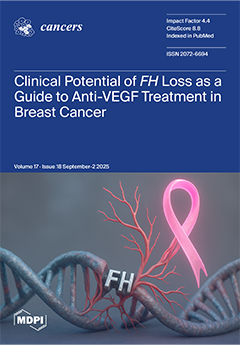Objective: The high expression of prostate-specific membrane antigen (PSMA) associated with neovascularization in non-prostatic malignant tumors and metastatic lesions has been documented in many studies. By taking advantage of the absence of PSMA-related background activity in brain tissue, in recent years, PSMA has been used for the imaging of glial tumors, especially for postoperative follow-up. The aim of this prospective study was to investigate the diagnostic value of
68Ga-PSMA-11 PET/CT by comparing
68Ga-PSMA-11 PET/CT,
18F-FDG PET/CT, and MRI findings in patients with brain metastases (BM).
Materials and Method: In this prospective study, 27 cases, 11 female and 16 male, with a mean age of 59.48 ± 12.21 years, were included. Patients diagnosed with BM on
18F-FDG PET/CT or CT/MRI at initial diagnosis or in the follow-up period were included in the study. PET findings of BM lesions obtained from
18F-FDG and
68Ga-PSMA-11 PET/CT imaging, demographic characteristics, histopathological data of the primary foci, and other clinical features were evaluated together.
Results: Twenty-four (89%) patients were included in the study for restaging, two (7%) patients for local recurrence assessment, and one (4%) patient for local recurrence and suspicion of additional lesions. The indications for
18F-FDG PET/CT were breast carcinoma for 37% (n:10), followed by lung carcinoma for 26% (n:7), colorectal adenocarcinoma for 14% (n:4), squamous cell larynx carcinoma for 7% (n:2), gastric signet ring cell carcinoma for 4% (n:1), pancreatic NET3 for 4% (n:1), thyroid papillary carcinoma for 4% (n:1), and malignant melanoma for 4% (n:1). In total, 26/27 included patients had PSMA-positive brain metastases but only one patient had PSMA-negative brain metastases with
68Ga-PSMA-11 PET/CT imaging. This patient was followed with a diagnosis of primary larynx squamous carcinoma and had a mass suspected of brain metastases. Further tests and an MRI revealed that the lesion in this patient was a hemorrhagic metastasis. The smallest metastatic focus on
68Ga-PSMA-11 PET/CT imaging was 0.22 cm, also confirmed by MRI (range: 0.22–2.81 cm). The mean ± SD SUVmax of the BM lesions was 17.9 ± 8.6 and 6.8 ± 5.2 on
18F-FDG PET/CT and
68Ga-PSMA-11 PET/CT imaging, respectively. Metastatic foci that could not be detected by
18F-FDG PET/CT imaging were successfully detected with
68Ga-PSMA-11 PET/CT imaging in 11 cases (42%). The distribution and number of metastatic lesions observed on cranial MRI and
68Ga-PSMA-11 PET/CT were compatible with each other for all patients. Immunohistochemical staining was performed in the primary tumor of 10 (38%) cases, and positive IHC staining with PSMA was detected in 5 patients. In addition, positive IHC staining with PSMA was detected in all of the four surgically excised brain metastatic tumor foci.
Conclusions: In this study,
68Ga-PSMA-11 PET/CT appears to be superior to
18F-FDG in detecting BM from various tumors, largely due to its high expression associated with neovascularization and the absence of PSMA expression in normal brain parenchyma. This lack of physiological uptake in healthy brain tissue provides excellent tumor-to-background contrast, further supporting the advantage of
68Ga-PSMA-11 over
18F-FDG for BM imaging. However, larger studies are required to confirm these findings, particularly through comparisons across tumor types and histopathological subgroups, integrating PSMA immunohistochemistry (IHC) scores with
68Ga-PSMA-11 uptake levels. Beyond its diagnostic potential, our results may also inform PSMA-targeted therapeutic strategies, offering new perspectives for the management of patients with brain metastases from diverse primary tumors.
Full article






